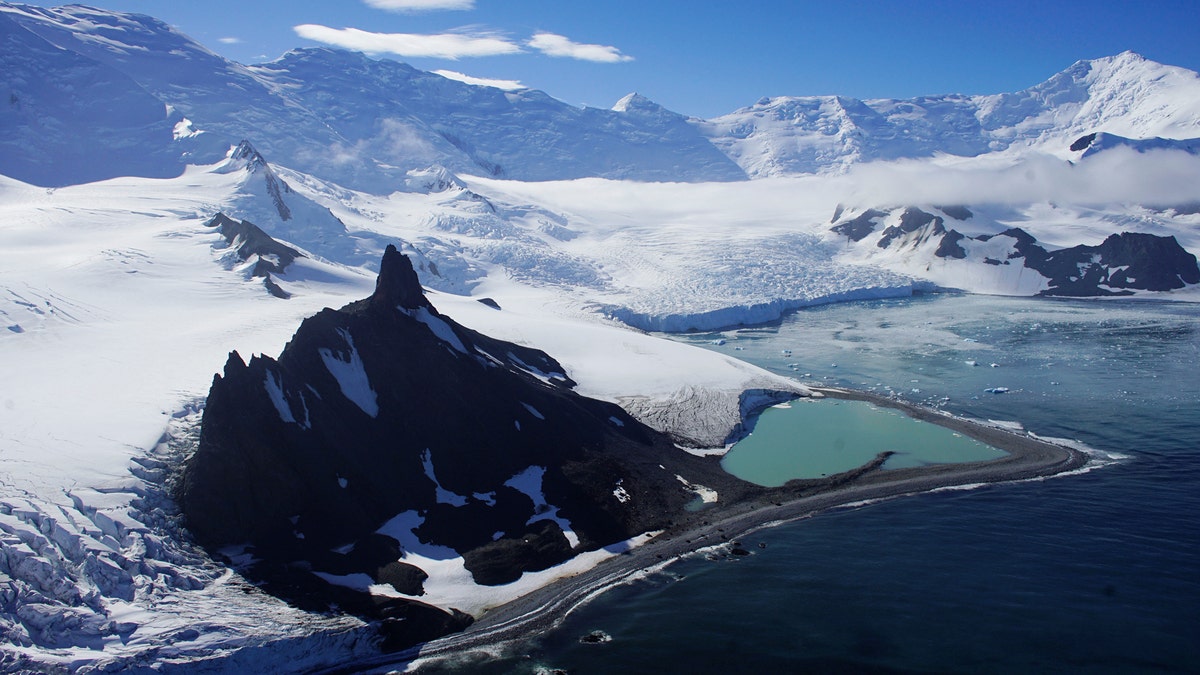Meteor hunters take to Antarctica
Why scientists are heading to Antarctica to hunt for meteors
Scientists are set to scour the frozen wastes of Antarctica in an audacious attempt to uncover lost meteorites.
Experts from the University of Manchester are planning a bold mission to seek out space rocks on the icy continent. Meteorites, they explain, can shed light on the Solar System’s formation with iron meteorites, in particular, providing valuable information on the formation of planets.
Earth's southernmost continent could prove extremely fruitful for meteorite research. Of more-than-35,000 meteorites recorded in collections across the globe, around two-thirds have been recovered from Antarctica, according to the BBC.
METEOR CREDITED FOR BRIGHT LIGHT, NOISE RATTLING MICHIGAN
While dark-colored non-metallic meteorites are relatively easy to spot on the white expanse of Antarctic, researchers note that iron meteorite finds in Antarctica are significantly less than in other parts of the world. Experts think that the missing meteorites may be just a few centimeters below the surface of the ice. Warmed by the Sun, the iron-rich meteorites likely melt the ice around them, causing them to sink and become trapped in the ice.

File photo - a satellite view of Antarctica is seen in this undated NASA handout photo obtained by Reuters February 6, 2012. (REUTERS/NASA/Handout via Reuters)
Working with the British Antarctic Survey, scientists will use specialist metal detection technology to scan three sites in Antarctica. A preliminary visit to the continent will take place in 2019 with the main expedition likely to take place the following year.
“We now have the opportunity to commence on a truly exciting scientific adventure,” said Dr. Geoffrey Evatt, an applied mathematician at the University of Manchester and member of the research team, in a statement. “If successful, our expeditions will help scientists to decode the origins of the Solar System and cement the UK as a leader in meteoritics and planetary science.”
METEORITE HUNTERS FIND FIRST PIECES OF THE MICHIGAN FIREBALL
The BBC reports that the scientists’ technology recently underwent a successful trial on Svalbard, a Norwegian archipelago in the Arctic Ocean.

File photo - Glaciers are seen in Half Moon Bay, Antarctica, Feb. 18, 2018. (REUTERS/Alexandre Meneghini)
Meteorites that land in Antarctica are gradually transported by ice movement toward the continent’s coast, according to the BBC. However, natural barriers such as mountains can prevent their ice-bound journey to the sea, potentially providing fruitful hunting grounds for scientists.
A research paper describing the expedition has been published in the journal Nature Communications.
ARIZONA METEORITE FETCHES RECORD-BREAKING $237,500 AT AUCTION
A meteoroid is a small chunk of asteroid or comet. When it enters Earth's atmosphere, it becomes a meteor or fireball or shooting star. The pieces of rock that hit the ground, valuable to collectors, are meteorites.
Earlier this year, a meteor made headlines when it flashed across the sky in Michigan. The blazing fireball sent meteorite hunters scrambling to find fragments of the rare space rock.
Depending on their size and material, meteorites can be lucrative finds. “Because meteorites are so scarce, they are priced and sold by the gram,” explains the Meteorlab website.
STUDY CONFIRMS KING TUT'S DAGGER WAS MADE WITH IRON FROM A METEORITE
Common iron meteorite prices are generally between 50 cents and $5 per gram, according to Meteorlab. Stone meteorites, however, are much scarcer and priced between $2 and $20 per gram. A type of stony-iron meteorite called a pallasite is of the greatest interest to private collectors, according to Geology.com.
Earlier this year a large 70-lb iron meteorite sold at auction for an incredible $237,500.
The Associated Press contributed to this article.
Follow James Rogers on Twitter @jamesjrogers





















